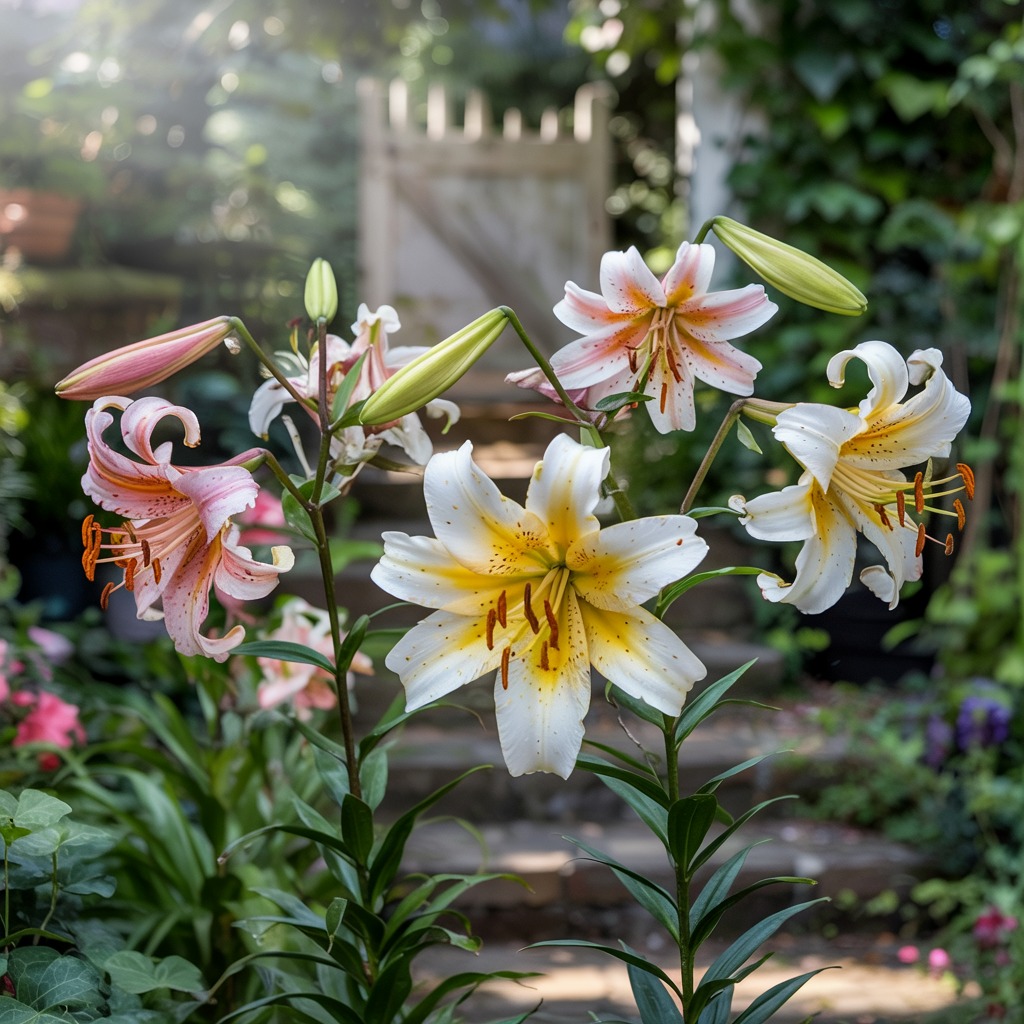How to Grow Asiatic Lilies: My Garden Secret to Vibrant Blooms
On a warm spring morning, I was planting herbs along the back fence when I noticed a single lily bloom tucked behind the rosemary. It wasn’t even in full sun, but the flower was wide open—vivid orange with deep maroon at the center—and it looked like it had painted itself into the garden overnight. That small shock of color made everything else around it look quiet by comparison.
I hadn’t planned anything fancy that season, just a mix of perennials and kitchen plants. But that bloom changed my mood, and soon I was digging new rows to make room for more—reds, yellows, creamy whites. The whole space transformed into a layered painting, alive with color before summer even hit.
Neighbors stopped to ask about them. Friends left with bulbs in their coat pockets. And I found myself waiting each spring for those bright stalks to rise again, strong and steady, like little garden celebrations.
Now I grow Asiatic lilies every year. They’re dependable, bold, and never ask for more than a bit of sun and some decent soil. I’d love to show you how I care for mine—and how easy it is to bring this kind of joy into your own space, no matter what size garden you’re working with.
Why Choose Asiatic Lilies?
Asiatic lilies (Lilium asiatica) don’t hesitate—they bloom early, grow upright without fuss, and don’t sulk in changing weather. Unlike some of their high-maintenance cousins, they don’t need stakes, they forgive imperfect soil, and they multiply quietly underground if you let them.

They may lack the strong perfume of Oriental lilies, but that just makes them better for close garden seating or indoor arrangements. What they do offer is bold color, a long bloom period, and a hardworking spirit that earns their keep.
Picking the Best Bulbs for Strong Plants
Good bulbs feel like promises in your palm—firm, rounded, and full of stored energy. I avoid any that feel soft or show signs of mold. At the nursery or online shop, I gently check for plumpness and healthy-looking outer skin.
If planting has to wait, I wrap them loosely in newspaper and store them in a cool, dry place—like the garage fridge or a shaded shelf indoors. Timing makes a difference, but healthy bulbs will forgive a short delay.
The Best Time to Plant Asiatic Lilies
I prefer planting mine in fall so they can settle into the soil before winter. But I’ve also tucked them in during early spring when the soil is workable and still cool—both seasons work if you give the bulbs enough time to root before summer heat kicks in.
Asiatic lilies are perennials, so once they’re in the ground, they’ll return each year a little stronger, a little taller. Some of mine have been blooming steadily for five years now with barely any extra care.
Choosing the Perfect Location
These lilies are sun lovers, and I mean it. Give them at least six hours of direct sun, and they’ll repay you with strong stems and full blooms. I’ve tried planting a few in dappled light under my plum tree once—pretty foliage, but barely a flower.

Drainage is just as important. I’ve lost bulbs to soggy clay before, so now I only plant in raised beds or areas I’ve amended with sand and compost. Even in containers, as long as there’s drainage, they’ll thrive.
Preparing the Soil
Good soil doesn’t need to be perfect—it just needs to breathe. I loosen mine about 12 inches deep and mix in compost and leaf mold from the bin. That combination gives roots room to grow while holding just enough moisture.
If your soil leans heavy like mine used to, add perlite or sand to keep things airy. Lilies can’t sit in wet soil for long—they’ll rot quietly underground while you wonder why nothing’s growing.
Planting Asiatic Lily Bulbs
I plant bulbs about 4 to 6 inches deep, always with the pointy end up. Clustering three to five together gives the bed a natural look and helps the stems support each other as they grow.

In pots, I use the same depth and spacing but give each bulb a little breathing room. Once they’re covered in soil, I water slowly and deeply—just enough to settle them in without creating a puddle.
Watering and Mulching
Lilies are pretty good at handling dry spells once established, but consistent moisture makes a huge difference when they’re getting started. I check the soil with my fingers—when it feels dry about an inch down, it’s time to water.
A thin layer of mulch—maybe 2 inches—is perfect for helping retain moisture and block weeds. I use pine straw or shredded bark depending on what’s nearby. It keeps the soil temperature steady and the garden looking tidy.
Fertilizing for Strong Growth and Blooms
Early in spring, just as the shoots break through the ground, I scatter a balanced fertilizer like 5-10-10 around the base. I’ve noticed stronger stems and better blooms when I give them this first boost.

Right before they flower, I feed them again. Avoid anything with high nitrogen—that’ll give you big leaves and almost no flowers. Lilies don’t need much, but they’ll shine brighter with just a little help.
Supporting Taller Types (When Needed)
Most Asiatic lilies stay upright on their own, but occasionally I grow varieties that stretch a bit taller. After a summer storm flattened a few in my border, I started using thin bamboo stakes and garden twine.
I keep the ties loose to avoid bruising the stems. It’s a small effort that keeps them from toppling when they’re at their most dramatic.
Deadheading and Pruning
As blooms fade, I snip them just below the flower to redirect energy back into the bulb. I leave the stem and leaves alone—they’re still feeding the plant until fall.
When the leaves finally yellow, I cut them down to the soil. By then, the lilies have stored everything they need to rest and return with new energy next year.
Overwintering Asiatic Lilies
Where winters get rough, I cover the beds with a thick mulch—about 4 inches of shredded bark or pine needles. That layer keeps the bulbs safe from freeze-and-thaw cycles. I live in a zone where digging them up isn’t necessary, but I know friends in harsher climates who lift theirs and store them in cool, dark spaces until spring.

In pots, I either bring them into the shed or insulate the containers with straw and wrap them in burlap. It’s worth the effort when you see them sprouting again the next spring.
Common Problems and How to Fix Them
Even the toughest flowers hit a few snags. Here’s how I’ve handled the most common:
Yellowing leaves: Almost always a sign the roots are too wet. I pull back on watering and improve drainage.
Botrytis blight: Brown spots on leaves? I space plants out more and remove affected foliage. A copper-based spray works if it spreads.
Lily beetles: Bright red bugs that chew fast. I handpick them or spray with insecticidal soap. Stay consistent—once they settle in, they’re stubborn.
Final Thoughts
Asiatic lilies bring a kind of cheer that feels effortless—like garden fireworks that keep returning year after year. Once they find a happy home, they ask for very little but give you so much in return. I plant them not just for myself, but for the neighbors who walk by, for the bees that visit, and for the joy of watching color rise from soil like magic.
If you’re looking for a plant that can handle real life—missed waterings, busy seasons, imperfect soil—while still showing up with grace and brilliance, give Asiatic lilies a try. You might just find them becoming your brightest garden habit too.







